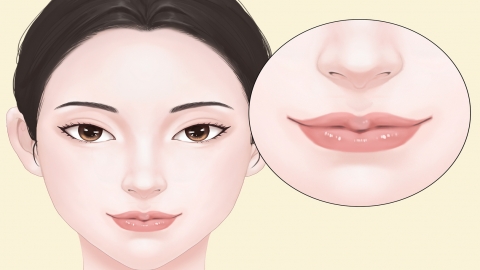What causes purple discoloration at the edges of the lips, and what should be done?
Generally, purple discoloration around the lip edges may be caused by excessive exercise, food staining, asthma, chronic obstructive pulmonary disease (COPD), pulmonary embolism, and other reasons. It is recommended to seek timely medical advice and receive treatments under a doctor's guidance, such as general treatment or medication. Detailed explanations are as follows:

1. Excessive Exercise
After intense physical activity, oxygen consumption increases, and the heart's output cannot meet the body's demands in a short period, especially in peripheral circulation. Blood supply to the lips decreases relatively, and oxygen levels drop, which may cause the edges of the lips to appear purple. Before exercising, it is important to warm up adequately. During exercise, control the intensity and duration according to your physical condition to avoid sudden high-intensity workouts.
2. Food Staining
Eating foods rich in purple pigments such as mulberries and blueberries may leave pigment residue on the edges of the lips, making them appear purple. This is usually harmless. Rinsing the mouth promptly after consuming such foods can help prevent pigment buildup.
3. Asthma
Asthma is commonly caused by both genetic and environmental factors, such as exposure to allergens like pollen and house dust mites. During an asthma attack, airway smooth muscles contract and airway mucosa swell, causing airway narrowing and ventilation impairment, which prevents sufficient oxygen from entering the bloodstream, resulting in purple discoloration at the lip edges due to hypoxia. Symptoms may also include wheezing and shortness of breath. Medications such as salbutamol aerosol, montelukast sodium chewable tablets, and aminophylline tablets may be used under a doctor's guidance.
4. Chronic Obstructive Pulmonary Disease
Chronic obstructive pulmonary disease is often associated with long-term smoking and recurrent respiratory infections. Chronic lung inflammation leads to airway remodeling and impaired ventilation function, affecting both oxygen intake and carbon dioxide removal, causing hypoxemia and resulting in purple discoloration at the lip edges. Symptoms may include chronic cough and phlegm production. Patients may follow medical advice to use medications such as tiotropium bromide powder inhaler, ambroxol hydrochloride sustained-release capsules, and carbocisteine oral solution.
5. Pulmonary Embolism
Pulmonary embolism is often caused by the dislodgement of deep vein thrombosis in the lower limbs. The embolus blocks the pulmonary artery and its branches, impeding pulmonary blood flow and impairing gas exchange, leading to severe hypoxia and obvious purple discoloration at the lip edges. Sudden chest pain and difficulty breathing may also occur. Patients may take medications such as heparin sodium injection, warfarin sodium tablets, and rivaroxaban tablets as advised by a doctor.
In daily life, maintaining a regular routine and enhancing immunity are important. Avoid visiting areas with severe air pollution to reduce the risk of respiratory diseases.










